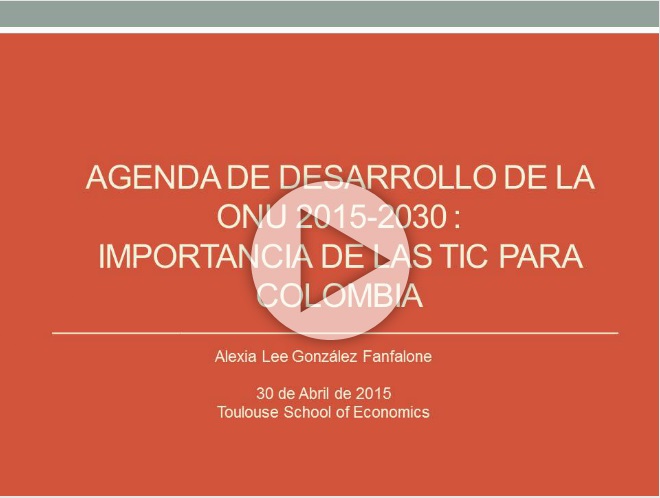Colombia Perspective: ICT Infrastructure
Click here for information in spanish.
Background
Information and computer technology (ICT) has become a vital tool for development. In particular, the availability of Internet access is an important way to help businesses grow and allow individuals access to a range of services to improve their lives. This is as important in Colombia as anywhere and it makes great economic sense: investing a dollar in expanding broadband could give back to Colombia $19 worth of benefits.
Developing countries are leapfrogging today’s rich world by going straight to mobile broadband access rather than investing in costly fixed lines, but there is still a big difference in levels of service. The ‘digital divide’ is more evident in Colombia than the average developing country, with only 7.9% of citizens having mobile broadband access in 2013 compared with an average of 16.8% in developing countries overall (and 75.1% in developed economies).
Fixed broadband penetration at 9.3% is a little above the Latin American average, but still way behind that of developed countries (i.e. 26.6%). Importantly, connection speeds are also slower, about one third of that in the United States and also slower than in Mexico or Chile. Despite this lack of infrastructure, Colombians have been eager to get online, with about half the population having access to the Internet in some way, despite the low penetration into individual households.
Although fixed broadband connections have their role in towns and cities, mobile broadband can give citizens across the country access to the Internet, including those in rural areas. A World Bank study in 2009 estimated that a 10% increase in broadband penetration in low- and medium-income countries boosted GDP growth by 1.34%. The benefits it brings are enormous, but its very importance makes it difficult to take full account of its impact, which may be greater than captured in such an analysis. For example, broadband access is not just about economic growth, but also social inclusion.
Current mobile broadband penetration in the country is just 7.9%, but ownership of mobile phones is very high (i.e. mobile telephony penetration is 104%), so it makes sense to focus on this approach. Providing a mobile broadband service can be very cost effective, since it can cost only a third as much as connecting people via fixed lines. Increasing penetration to 60% by 2030 is a very smart target, delivering benefits for Colombia of $19 for each dollar invested.
This is a big project, which would have to bring 30 million subscribers online in the next 15 years. The costs would be large – nearly $13 billion – but so would the economic benefits. GDP would be boosted by about $250 billion, which amounts to over $4,000 at current value for every Colombian citizen between now and 2030.
The Colombian government has been well aware of the importance of ICT to the economy and has helped to facilitate growth via the Plan Vive Digital and the 2009 ICT Law. This has helped boost the numbers of people who are already able to access the Internet, although not necessarily via their own phones or computers.
Policymakers have a continuing role to play in meeting the proposed new target. Although the focus is on mobile services, these still require a network of fibre optic cable across the country, and there is a need to make sure dominant local and regional suppliers give full access to their networks to avoid bottlenecks.
There are also a number of other things governments can do to boost competition and lower costs for mobile services, including making sure small operators have access to the market and reducing taxation on both suppliers and subscribers.


